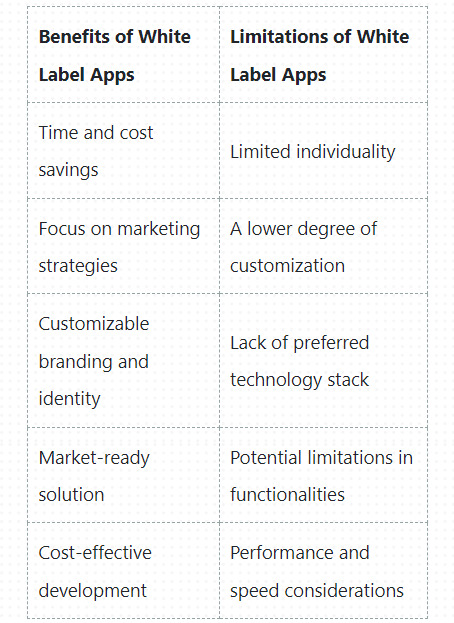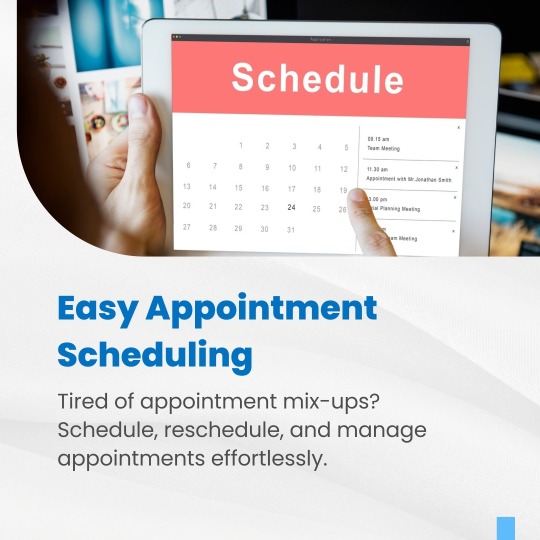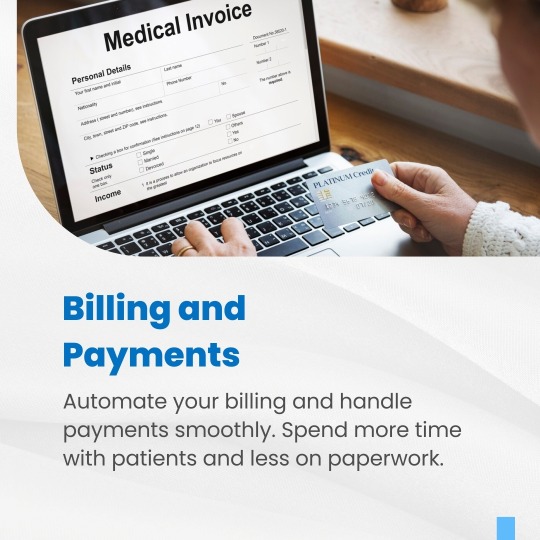#white label app
Text
How White Label Apps Can Increase Your Revenue Exponentially
In the dynamic landscape of digital entrepreneurship, white label apps have emerged as a powerful tool for businesses seeking to scale efficiently and increase revenue streams. This guest post explores the transformative potential of white label apps, examining their benefits, implementation strategies, and real-world success stories.
Understanding White Label Apps
White label apps refer to…

View On WordPress
0 notes
Text
White Label App Solutions
OnGraph is your trusted partner for White Label App Solutions, delivering top-notch, customizable apps tailored to your brand's needs. Our white label apps provide a quick and cost-effective way to launch your own branded software solutions, whether it's a mobile app, web application, or SaaS platform. We offer a diverse range of industry-specific templates and modules, ensuring your app aligns perfectly with your business goals.
0 notes
Text
What are White Label Apps? A Closer Look & Popular Examples

What is a White Label Application?
White label apps are generic applications that are created by one company but personalized and branded by another company to use as their product. The term “white label” comes from placing a generic or blank label on a product, allowing purchasers to apply their branding.
White Label Development: Prioritizing Marketing over Development
White label application development is a convenient solution for businesses that lack the resources for application development. Businesses can prioritize their marketing strategies by opting for white-label apps as a Software as a Service (SaaS) solution while relying on a specialized third-party company to handle the development aspect.
An Exemplary Use of White Label App
For instance, a small restaurant may desire a solution that allows customers to pre-book and reserve seats or order food without complex or unnecessary functionalities. In such cases, white-label sellers can serve these industries by offering rebranded software tailored to their needs.
White label apps offer resellers the flexibility to customize various visual elements, such as adding logos and brand names and making other modifications according to their specific requirements. This customization allows them to sell or utilize the app under their brand identity.
Key Benefits of a White Label App
White label apps prove to be cost-effective application development for end-customers and resellers. Developers provide a pre-packaged app featuring generic functionalities. As a result, the expenses associated with app development are considerably reduced. Furthermore, you can promptly acquire a market-ready solution since the app is already prepared.
Rebranding white-label applications requires minimal effort and resources, allowing you to deliver a market-ready application in a shorter timeframe.
Investing in white-label applications reduces the commercialization risk as the templates you utilize have already been tested and proven successful.
Limitations with a White Lable App
While white-label apps offer a high level of customization, achieving specific functionalities that differentiate your key services can be challenging. The degree of customization is lower when compared to an app that is specifically developed according to your requirements.
In such a scenario, it is advisable to assess your needs, especially if the app requires multiple specific functionalities. Opting for a generic app may not be a wise decision because it does not allow you to select your preferred technology stack and tailored features.
The choice of technology that powers an application is highly significant as it directly affects the performance and speed of the app.

How much does it cost to develop a white-label mobile app?
The price of a white-label solution varies based on the application’s features, but on average, it falls within the range of $20,000 to $50,000. Basic applications usually start at a monthly cost of a few hundred dollars.
However, the specific plans and prices can vary depending on the functionality required for the app. Numerous app builders provide additional features and allow multiple revisions as part of their offerings. Overall, it only requires a little investment from the resellers.
Also, the cost of a service can vary based on the option you choose. In the case of a subscription-based service, the cost is lower compared to purchasing the entire source code of a full application.
Sellers frequently integrate various modules tailored to your specific needs, which directly impact the application’s functionality and overall cost.
When choosing a subscription, you gain the advantage of continuous upgrades. However, if you decide to discontinue the subscription, your access to the application will be revoked.
On the other hand, with opting one-time purchase, you typically pay a single upfront fee that the seller grants you complete access to the application, including the source code and any associated rights or licenses. It provides greater freedom and complete ownership over the service or application.
Read more at https://www.brilworks.com/blog/what-are-white-label-apps-and-popular-examples/
0 notes
Text
How to Build a Zomato Clone App: A Step-by-Step Guide

Building a successful food delivery app like Zomato requires careful planning and execution. With the growing demand for convenient and seamless food delivery services, developing a Zomato clone app can be a lucrative business opportunity. In this step-by-step guide, we will walk you through the process of building your own Zomato clone app, from market research and design to development and launch.
Whether you are an aspiring entrepreneur or an existing restaurant owner looking to expand your business, this guide will provide you with all the information you need to create a successful food delivery app and tap into the booming food delivery industry.
Here's a step-by-step guide to help you build a Zomato-like app:
Market Research
Understand your target audience and market. Analyze Zomato and other similar apps to identify features and functionalities.
Legal Compliance
Check local laws and regulations related to food delivery and online platforms. Obtain necessary licenses and permissions.
Define Features
List the features you want in your app, such as user registration, restaurant listing, menu display, reviews, ratings, order placement, payment processing, etc.
Choose Technology Stack
Select the technology stack for your app (front-end and back-end frameworks, database, etc.).
Wireframing and Design
Create wireframes to outline the app's structure. Design the user interface (UI) and user experience (UX).
Backend Development
Set up the server and database. Implement user authentication, authorization, and data storage.
Frontend Development
Based on the design, create the user interface. Implement features like user registration, restaurant listing, menu display, and order placement.
Integrate Maps and Location Services
Use mapping APIs to provide location-based services for finding restaurants and tracking deliveries.
Implement Search and Filters
Allow users to search for restaurants based on various criteria like cuisine, location, ratings, etc.
User Reviews and Ratings
Implement an application for users to submit restaurant reviews and ratings.
Order Placement and Checkout
Develop a seamless and secure process for users to place orders and make payments.
Notifications
Set up push notifications to keep users informed about order status, promotions, etc.
Payment Integration
Integrate secure payment gateways for seamless transactions.
Testing
Perform extensive testing to investigate and fix bugs. Check out the app on different devices and screen sizes.
Deployment
Launch the app to the App Store and Google Play Store.
Monitor and Maintain
Monitor app performance and address any issues promptly. Maintain the app's security patches.
Building a Zomato clone app requires a strategic approach, technical proficiency, and a commitment to delivering an outstanding user experience. By combining these factors, you can create a successful food delivery and restaurant discovery app that captivates users and establishes a strong presence in the competitive market.
What is a Zomato Clone App? & How it Works!
A Zomato clone app is a customized application that replicates the features and functionalities of the popular food delivery and restaurant discovery platform, Zomato. Creating a Zomato clone allows entrepreneurs and businesses to enter the food delivery and restaurant aggregator market with their version of a similar service.
Here's an overview of how a Zomato clone app typically works:
User Registration and Profile Creation
Users download the Zomato clone app from an app store. They register by providing basic details or logging in through social media accounts. Users create profiles where they can manage their preferences, addresses, and payment methods.
Restaurant Profiles
Users can view detailed profiles of restaurants, including menus, prices, operating hours, reviews, and ratings.
Order Placement
Users can select items from the restaurant's menu and add them to their cart. They proceed to checkout, where they confirm the order, select the delivery address, and choose a payment method.
Payment Processing
The Zomato clone app integrates with secure payment gateways to process transactions. Users can make payments using various methods, including credit/debit cards, digital wallets, and sometimes cash on delivery.
Order Confirmation
Users receive an order confirmation with details such as estimated delivery time and order number. The app may also provide real-time tracking of the order's status.
Delivery or Pickup
For food delivery, a delivery partner is assigned to pick up the order and deliver it to the specified address. Users can track the delivery in real-time. For pickup, users receive a notification when the order is ready for collection.
User Feedback and Ratings
After the order is delivered or picked up, users can provide feedback and ratings on the overall experience.
Admin Dashboard
An admin dashboard allows the platform owner to manage and monitor user activity, restaurant partnerships, and overall app performance. It also provides tools for customer support and analytics.
Marketing and Promotions
The Zomato clone app may incorporate features for promotional activities, discounts, and loyalty programs to attract and retain users.
Building a Zomato clone involves careful consideration of each feature and ensuring a seamless user experience throughout the entire process, from restaurant discovery to order delivery or pickup. Integration with reliable payment gateways and real-time tracking contributes to the overall success and user satisfaction of the app.
Benefits of Developing a Zomato Clone App
Developing a Zomato clone app offers a myriad of benefits, leveraging the success of an established food delivery app and restaurant discovery platform. Here are key advantages that contribute to the appeal of creating a Zomato clone:
Rapid Market Entry and Brand Recognition
Building a Zomato clone facilitates a swift entry into the competitive food delivery market. By replicating a proven business model, your app gains immediate brand recognition. Users familiar with Zomato are more likely to adopt your platform, accelerating user acquisition.
Comprehensive Feature Set
Zomato is renowned for its comprehensive feature set, including restaurant listings, reviews, ratings, real-time tracking, and secure payment options.
Established User Base
A Zomato clone can attract users who are already accustomed to using similar platforms. This existing user base provides a solid foundation for user engagement and adoption, giving your app a head start in terms of audience reach.
Monetization Strategies
Zomato has established effective monetization strategies, such as charging restaurants a commission on orders and offering premium features. By adopting these proven revenue models, your app can generate income from day one.
Time and Cost Efficiency
Developing a Zomato clone is a time-efficient and cost-effective approach compared to building a unique concept from scratch. Reusing existing concepts and technologies reduces development time and expenses.
Scalability Options
As your user base grows, a Zomato clone provides scalability options. You can expand your infrastructure and services to accommodate increased demand, ensuring a seamless experience for users.
Developing a Zomato clone app offers a strategic and efficient path to enter the food delivery and restaurant discovery market, leveraging the success and features of a proven industry leader.
Features of the Zomato Clone App
A Zomato clone app replicates the features of the popular food delivery and restaurant discovery platform, offering a comprehensive set of functionalities to create a similar user experience. Here are key features typically incorporated into a Zomato clone app:
User Registration and Profiles
The app allows users to create accounts easily, providing personal information, contact details, and preferences. User profiles enable customization, order history tracking, and personalized recommendations.
Restaurant Listings and Profiles
A Zomato clone showcases a wide array of restaurants, each with detailed profiles. Users can explore menus, view prices, check operating hours, and access high-quality images, empowering them to make informed dining decisions.
Search and Filters
Robust search and filter options enhance user experience. Users can search for restaurants based on cuisine, location, ratings, and price range, ensuring they find exactly what they're looking for.
Ordering System
The app features a user-friendly ordering system where users can add items to their cart, customize orders, and proceed to secure checkout. Integration with various payment options facilitates seamless transactions.
Real-Time Order Tracking
To keep users informed and engaged a Zomato clone script incorporates real-time order tracking. Users can monitor the status of their orders from preparation to delivery, enhancing transparency and customer satisfaction.
Integration of Payment Gateway
A secure payment gateway is integrated into the app to handle financial transactions. Users can make payments using credit/debit cards, digital wallets, or other preferred methods, ensuring a smooth and secure payment process.
Admin Dashboard
An admin dashboard provides a centralized interface for platform administrators to manage user accounts, monitor restaurant activity, analyze performance metrics, and address customer support issues.
Marketing and Promotions
To attract and retain users, a Zomato clone may feature marketing and promotional tools. These can include discounts, loyalty programs, and special offers to enhance user engagement.
Order Fulfillment and Delivery Integration
For apps offering food delivery services, integration with order fulfillment and delivery services is crucial. Assigning delivery partners, optimizing routes, and providing real-time tracking contribute to a seamless delivery experience.
Customization for Local Markets
A Zomato clone allows customization to meet the unique demands of local markets. It includes adapting the app's features and functionalities to align with regional preferences, cuisines, and cultural nuances.
A Zomato clone app combines these features to create a comprehensive platform for users to discover restaurants, place orders, and enjoy a seamless dining experience.
What Should You Consider While Developing a Food Delivery App Like Zomato?
When developing a food delivery app like Zomato, several critical factors need consideration:
Market Research
Conduct thorough market research to understand user demographics, preferences, and competitor strategies. Identify gaps and opportunities in the market.
User Experience (UX/UI)
Prioritize an intuitive and visually appealing interface. Streamline the user journey, making it easy for users to discover restaurants, place orders, and track deliveries.
Feature Set
Replicate Zomato's core features, including restaurant listings, user reviews, ratings, real-time order tracking, and secure payment options. Enhance these features to add value and differentiation.
Customization for Local Markets
Adapt the app to cater to local culinary preferences, languages, and cultural norms. Personalization for different regions enhances user relevance.
Payment Gateway Integration
Integrate reliable and secure payment gateways, offering users diverse and convenient payment options.
Legal Compliance
Ensure strict adherence to data security and privacy regulations. Address legal considerations to build user trust.
Marketing and Promotion
Develop a strategic marketing plan to promote the app effectively. Leverage various channels for user acquisition and engagement.
Customer Support
Implement responsive customer support to address user queries promptly, enhancing overall user satisfaction.
By carefully considering these aspects, a food delivery app can be developed to meet user needs and succeed in a competitive market.
Wrapping up
Building a Zomato clone app requires meticulous planning, incorporating key features, ensuring a user-friendly interface, and prioritizing local customization. By embracing the proven success of platforms like Zomato, developers can create a comprehensive food delivery app that caters to market demands and offers a seamless dining experience for users.
#zomato clone app#zomato clone#zomato clone script#food ordering app#food delivery business#food delivery services#food delivery app#best food delivery software#best online food ordering system#white label food delivery app#online food delivery app development#food delivery app development company#food delivery app development cost#online food delivery services#food delivery app like zomato#zomato clone app development
2 notes
·
View notes
Text
Well, it's taken around a week, but I've managed to follow almost all of my regular accounts again that I had been following for years. I just hit my first 500 likes; it will be a journey to find and like all your favorite posts again, so please bear with me.
Reach out to me if I was following you and I am not now… and thank everyone for your continued support. I also implemented a new Tumblr theme for those who use Tumblr as a website. -the boy 🧸
#bellymonstersblog#the bears den#account recovery#new account#building it back up#the bear#bear love#lgbtqia#tumblr community#almost there#work in progress#no doubt in my mind#we'll get there#working on it#dm me if I've missed you#it was super weird not having tumblr on my phone#i kept searching for the app#i'm hoping this way the blog wont be as white hot and we can have some more fun without hurtful labels
2 notes
·
View notes
Text
Why is Now the Perfect Time to Invest in Cryptocurrency Exchange Development?
As digital currencies become more widely accepted, the demand for cryptocurrency exchanges grows exponentially. There has never been a better opportunity to engage in cryptocurrency exchange development for business owners looking to capitalize on this expanding market. The current landscape is ripe for opportunity, and those who act now stand to gain significant benefits. In this blog, we will explore why now is the perfect time to invest in cryptocurrency exchange development. From the booming market to the accelerating mainstream adoption, we'll explore the key factors that make this a suitable moment to enter this profitable industry.
Explosive Market Growth
The cryptocurrency sector has grown at an exclusive rate over the last decade, and there are no signs of it slowing down. As of 2024, the global cryptocurrency market capitalization had reached trillions of dollars, with millions of people trading digital assets every day. This incredible growth has resulted in a massive need for reputable and user-friendly cryptocurrency exchanges. Businesses that engage in exchange development now can gain access to this growing sector and establish an important presence in the digital economy.
Mainstream Adoption and Regulation
One of the most important indicators that now is the time to invest in cryptocurrency exchange development is the growing public usage of digital currencies. Major organizations, financial institutions, and even governments are recognizing the usefulness of cryptocurrency and incorporating it into their operations. Furthermore, regulatory frameworks are becoming clearer, creating a more secure environment for enterprises operating in the cryptocurrency industry. This trend toward popular acceptance and regulation provides an excellent opportunity for entrepreneurs to build a trustworthy and compliant trading platform.
Technological Advancements
Exciting advances in blockchain technology provide yet another compelling incentive to invest in cryptocurrency exchange development today. Blockchain technology has progressed completely, providing more scalable, secure, and efficient solutions than ever before. These technological advancements make it easier for corporations to build strong exchanges capable of handling large amounts of transactions while maintaining user security. By exploiting these improvements, businesses can create advanced exchanges that meet the market's rising demands.
Clone Scripts: A Fast-Track to Success
For firms looking to build a cryptocurrency exchange rapidly, using clone scripts such as Binance Clone Script, Coinbase Clone Script, or Paxful Clone Script provides a speedy path to success. These clone scripts offer a ready-made solution that mimics the essential features and operations of renowned exchanges, allowing entrepreneurs to develop a fully operating platform in a fraction of the time required to construct from scratch.
Binance Clone Script: Binance is the world's largest cryptocurrency exchange by trading volume, making it an ideal role model for forward-looking exchange entrepreneurs. A Binance Clone Script has all of Binance's major features, such as multi-currency support, high liquidity, and advanced trading choices. It's an excellent solution for organizations wishing to reach a large number of customers while also providing a reliable trade platform.
Coinbase Clone Script: Coinbase is well-known for its user-friendly interface and good regulatory compliance. A Coinbase Clone Script enables businesses to build a platform that appeals to both rookie and expert traders, including safe wallets, simple fiat-to-crypto conversion, and compliance with local regulations.
Paxful Clone Script: Paxful is a popular peer-to-peer (P2P) cryptocurrency exchange that lets users buy and sell Bitcoin with a variety of payment options. A Paxful Clone Script is ideal for organizations wishing to enter the P2P exchange industry, as it includes features like escrow services, secure transactions, and multi-payment possibilities. This script allows businesses to build a platform that directly connects buyers and sellers, adapting to a wide and global audience.
Profitability and Revenue Streams
Investing in cryptocurrency exchange development has significant profit potential. Exchange platforms make money from a variety of sources, including transaction fees, listing fees, withdrawal fees, and staking rewards. As trading volumes increase, so does the opportunity for big profits on investment. Businesses can also experiment with new revenue models such as margin trading, futures contracts, and token sales to increase their profits.
Conclusion:
The current position provides a unique opportunity for business persons interested in cryptocurrency exchange development. With accelerating market expansion, rising mainstream usage, technology improvements, and multiple revenue streams, the potential benefits are enormous. Businesses that invest in exchange development now may place themselves at the forefront of the digital economy and benefit from the next wave of financial innovation.
Whether you’re interested in a custom-built exchange or a Clone Script, the time to act is now. Embrace the future of finance, and start building your exchange platform today. Partner with a trusted cryptocurrency exchange development company like Kryptobees to bring your vision to life. Let’s revolutionize the way the world trades digital assets together.

#crypto exchange development company#crypto exchange software development company#crypto exchange app development#white label cryptocurrency exchange script
0 notes
Text
Revolutionize Your Supply Chain with Custom Logistics App Development

Why Opt for Custom Logistics App Development?
1. Tailored Solutions for Unique Needs
Every business has its own set of logistics challenges and requirements. Custom logistics apps are designed to address these specific needs, offering features and functionalities that align perfectly with your operational processes. Whether you need advanced inventory management, specialized route planning, or integration with proprietary systems, a custom app ensures that the solution is crafted to fit your exact needs.
2. Scalability and Flexibility
Business growth often brings changes in logistics needs. Custom apps are built with scalability in mind, allowing you to add new features, integrate with additional systems, and handle increased volumes as your business expands. This flexibility ensures that the app evolves with your business, providing long-term value and adaptability.
3. Seamless Integration with Existing Systems
One of the key advantages of a custom logistics app is its ability to integrate seamlessly with your existing systems, such as CRM, ERP, and accounting software. This integration facilitates smooth data flow between platforms, reducing manual data entry, minimizing errors, and enhancing overall efficiency. A unified system helps streamline operations and provides a more cohesive user experience.
4. Enhanced User Experience
Custom apps are designed with your team’s workflow and preferences in mind. This results in a user-friendly interface that improves productivity and reduces training time. By tailoring the app’s functionality and design to your specific needs, you ensure that users have a seamless experience that aligns with their tasks and responsibilities.
5. Competitive Advantage
Investing in a custom logistics app can provide a significant competitive edge. With features and functionalities that are uniquely suited to your business, you can optimize your operations, offer superior services, and differentiate your brand in a crowded marketplace. Customization enables you to stay ahead of competitors who rely on generic solutions.
Essential Features for a Custom Logistics App
When developing a custom logistics app, consider incorporating the following features to maximize its effectiveness:
Real-Time Tracking: Enables live monitoring of shipments, providing updates on status and location to enhance transparency and customer satisfaction.
Advanced Inventory Management: Tools for tracking stock levels, managing warehouses, and optimizing inventory processes to prevent stockouts and overstock situations.
Route Optimization: Algorithms to determine the most efficient delivery routes, reducing transportation costs and improving delivery times.
Custom Alerts and Notifications: Personalized alerts for various logistics events, keeping you informed and responsive to critical updates.
Detailed Analytics and Reporting: Insights into logistics performance, helping you make data-driven decisions and identify areas for improvement.
Mobile Compatibility: Access on various devices, including smartphones and tablets, for on-the-go management and enhanced flexibility.
The Custom App Development Process
Define Objectives and Requirements: Start by identifying your specific logistics needs and business goals. This will guide the development process and ensure that the app meets your requirements.
Select a Development Partner: Choose a reputable development partner with experience in building custom logistics solutions. A knowledgeable team can provide valuable insights and guide you through the development process.
Design and Prototyping: Work with your development team to design the app’s user interface and create prototypes. This phase involves defining features, layout, and overall user experience.
Development and Integration: Once the design is approved, the development team will build the app, including coding, integrating with existing systems, and ensuring that all functionalities work as intended.
Testing and Quality Assurance: Conduct thorough testing to identify and resolve any bugs or issues. Quality assurance is essential for ensuring that the app performs reliably and meets all specifications.
Deployment and Training: After successful testing, deploy the app and provide training to your team. Effective training ensures that users are familiar with the app’s features and can use it efficiently.
Ongoing Support and Maintenance: Post-deployment support is crucial for addressing any issues and implementing updates or enhancements as needed. Regular maintenance ensures that the app remains functional and up-to-date.
Conclusion
Custom logistics app development offers a strategic advantage for businesses seeking to optimize their logistics operations and gain a competitive edge. By tailoring the app to your specific needs, you can achieve greater efficiency, flexibility, and integration with existing systems, all while enhancing the user experience.
0 notes
Text
How Bet365 Clone Script Helps Investors to Start a Magnificent Sports Betting Business?

Starting a sports betting business has never been more enticing, especially with the rise of digital platforms that offer seamless gaming experiences. Among these, Bet365 stands out as a leading name, renowned for its user-friendly interface, wide range of betting options, and reliable service. For aspiring entrepreneurs looking to replicate this success, the Bet365 Clone Script presents an unparalleled opportunity. This script is a comprehensive solution that enables investors to quickly and efficiently launch a sports betting platform with all the features that make Bet365 so popular.
The Power of the Bet365 Clone Script
The Bet365 Clone Script is a ready-made software solution that mirrors the functionality of the original Bet365 platform. It allows investors to create a sports betting business that offers everything from live betting and in-play wagering to a vast selection of sports and events. The script is designed to be highly customizable, enabling businesses to tailor the platform to meet specific market needs and branding requirements.
One of the primary advantages of using the Bet365 Clone Software is its cost-effectiveness. Developing a sports betting platform from scratch can be both time-consuming and expensive. However, with a clone script, investors can bypass the lengthy development process and go straight to market. This not only reduces costs but also speeds up the time to launch, giving businesses a competitive edge.
Features that Set Bet365 Clone Software Apart
The Bet365 Clone Software is packed with features that ensure a smooth and engaging user experience. These include:
Live Betting: One of the most sought-after features in sports betting is the ability to place bets in real-time as the action unfolds. The Bet365 Clone Script supports live betting, allowing users to bet on ongoing events with updated odds.
Comprehensive Sports Coverage: The script provides a wide range of sports and events, catering to diverse interests. Whether it’s football, basketball, cricket, or horse racing, the platform offers something for every sports enthusiast.
User-Friendly Interface: The software is designed with the end-user in mind, ensuring that navigation is intuitive and placing bets is hassle-free. The sleek design and seamless functionality keep users engaged and returning to the platform.
Secure Transactions: Trust is paramount in the online betting world. The Bet365 Clone Software is equipped with robust security features to ensure that all transactions are safe and that user data is protected.
The White Label Advantage
For businesses looking to establish their brand quickly, White Label Bet365 Clone Software is an ideal solution. This version of the clone script allows investors to launch a sports betting platform under their own brand name while leveraging the tried-and-tested features of the Bet365 model. The white label solution is fully customizable, enabling businesses to modify the design, add unique features, and even integrate third-party services to create a distinctive offering in the market.
The Role of Plurance in Sports Betting Clone Scripts
When it comes to choosing the right partner for your sports betting venture, Plurance is a predominant name in the industry. As a leading Sports Betting Clone Script Provider, Plurance offers top-notch Bet365 Clone Scripts that are tailored to meet the unique needs of your business. Their expertise in the field ensures that your platform will be equipped with the latest technologies, user-friendly interfaces, and secure payment gateways, setting you up for success in the competitive sports betting market.
The Bet365 Clone App: Betting on the Go
In today’s fast-paced world, mobile accessibility is crucial. The Bet365 Clone App ensures that your users can place bets anytime, anywhere. This app replicates the mobile experience of Bet365, offering all the features available on the desktop version in a compact and user-friendly mobile interface. With the Bet365 Clone App, your business can tap into the growing number of users who prefer to bet on the go, significantly expanding your reach and customer base.
Conclusion
Launching a sports betting business can be a daunting task, but with the Bet365 Clone Script, it becomes a manageable and profitable venture. By leveraging the features of the Bet365 Clone Software and the expertise of a reliable partner like Plurance, investors can create a magnificent sports betting platform that attracts users and generates substantial revenue. Whether you’re opting for a white label solution or a fully customized platform, the Bet365 Clone Script offers the tools you need to succeed in the dynamic world of online sports betting.
#Bet365 Clone Script#Bet365 Clone Software#Bet365 Clone App#White Label Bet365 Clone Software#Create a Sports Betting Platform like Bet365
0 notes
Text
A Step-by-Step Approach to Developing an UberEats Clone App: Tips and Best Practices

Developing an Uber Eats clone app can be a lucrative opportunity for entrepreneurs looking to enter the food delivery industry. With the growing demand for convenient food delivery services, creating a well-designed, user-friendly app can set you on the path to success. However, building a successful UberEats clone app requires careful planning, thoughtful design, and the integration of essential features. In this guide, we'll take you through a step-by-step approach to developing an UberEats clone app, offering tips and best practices to ensure your app meets user expectations and achieves business success.
Market Research and Planning
Understanding Your Target Audience
Before you begin developing your UberEats clone app, it's crucial to conduct thorough market research. Understanding your target audience's preferences, behaviors, and pain points will help you design an app that meets their needs. Consider factors such as demographics, location, and dining habits.
Analyzing Competitors
Study your competitors to identify what they do well and where they fall short. Analyze successful food delivery apps like Uber Eats, DoorDash, and Grubhub to understand their features, user experience, and pricing models. This analysis will guide you in creating a competitive app that stands out in the market.
Defining Your Unique Value Proposition
Your Uber Eats clone app should offer something unique that sets it apart from the competition. Whether it's faster delivery times, a broader selection of restaurants, or exclusive deals, defining your unique value proposition will attract users to your platform.
Choosing the Right Technology Stack
Front-End Development
The front end of your UberEats clone app is what users interact with, so it should be intuitive and visually appealing. Choose a technology stack that allows for responsive design and smooth performance across different devices. Common front-end technologies include React Native, Flutter, or Swift for iOS and Kotlin for Android.
Back-End Development
The back end is the engine that powers your app, handling tasks like order processing, user authentication, and payment processing. Opt for a robust back-end technology stack that ensures scalability and security. Popular choices include Node.js, Ruby on Rails, or Django.
Database Management
Your app will require a database to store user information, order details, and restaurant data. Choose a reliable and scalable database management system (DBMS) such as PostgreSQL, MySQL, or MongoDB.
Designing the User Interface (UI) and User Experience (UX)
User-Centered Design
The success of your UberEats clone app hinges on providing a seamless user experience. Design your app with the user in mind, ensuring that the interface is intuitive, easy to navigate, and visually appealing. Prioritize features that users value most, such as quick search, easy ordering, and real-time tracking.
Wireframing and Prototyping
Before diving into full-scale development, create wireframes and prototypes of your app. This step allows you to visualize the app's layout and functionality, making it easier to identify potential issues and make improvements early in the process.
Testing and Feedback
Conduct usability testing with real users to gather feedback on your app's design and functionality. This feedback will help you refine the user experience and address any pain points before launching the app.
Integrating Essential Features
Restaurant Listings and Menu Management
Your UberEats clone app should allow users to browse a wide selection of restaurants and view detailed menus. Implement features that enable restaurant owners to update their listings, manage menus, and showcase special offers.
Order Placement and Payment Processing
Simplify the order placement process by allowing users to customize their orders, select delivery options, and make payments securely. Integrate multiple payment gateways such as Stripe, PayPal, or Apple Pay to offer users flexibility in payment methods.
Real-Time Order Tracking
Real-time order tracking is a must-have feature for any food delivery app. Integrate GPS tracking to allow users to monitor the status of their orders from preparation to delivery. This feature enhances transparency and builds trust with your users.
Push Notifications
Push notifications are essential for keeping users informed about their orders, special offers, and promotions. Implement personalized notifications to engage users and encourage repeat orders.
Reviews and Ratings
Allow users to leave reviews and ratings for restaurants and delivery drivers. This feature builds credibility and helps other users make informed decisions when placing orders.
Customer Support
Provide a reliable customer support system within your app. Include features like in-app chat, FAQs, and support tickets to assist users with any issues they may encounter.
Testing and Quality Assurance
Functional Testing
Ensure that all features of your UberEats clone app work as intended by conducting thorough functional testing. Test each feature, from order placement to payment processing, to identify and fix any bugs.
Performance Testing
Evaluate the app's performance under different conditions, such as high traffic or low network connectivity. This testing ensures that your app can handle peak times without compromising user experience.
Security Testing
Security is paramount in any app that handles sensitive user data. Conduct security testing to identify vulnerabilities and implement measures to protect user information and payment details.
User Acceptance Testing (UAT)
Involve real users in the testing process by conducting user acceptance testing. This step helps ensure that the app meets user expectations and is ready for launch.
Launching and Marketing Your App
Launch Strategy
Plan a strategic launch for your UberEats clone app. Consider launching in phases, starting with a pilot launch in a specific region before expanding to other areas. This approach allows you to gather feedback and make improvements before scaling up.
Marketing and Promotion
Develop a comprehensive marketing strategy to promote your app and attract users. Utilize social media marketing, influencer partnerships, and digital advertising to increase visibility. Offering discounts or referral programs can also incentivize new users to try your app.
App Store Optimization (ASO)
Optimize your app's listing on app stores to increase its visibility and downloads. Use relevant keywords, compelling descriptions, and high-quality screenshots to attract potential users.
Continuous Improvement and Scaling
Gathering User Feedback
After launching your UberEats clone app, gather feedback from users to identify areas for improvement. Regularly update the app based on user suggestions to enhance the user experience.
Scaling Your App
As your user base grows, ensure that your app's infrastructure can handle increased traffic and demand. Consider adding new features, expanding to new regions, and partnering with more restaurants to scale your business.
Monitoring Performance
Continuously monitor your app's performance, including load times, crash reports, and user retention rates. Use analytics tools to gain insights into user behavior and optimize the app accordingly.
Conclusion
Developing an UberEats clone app with the help of an on-demand app development company involves careful planning, strategic execution, and ongoing refinement. By focusing on market research, technology selection, design, testing, and marketing, you can create a successful food delivery app that meets user needs and fosters business growth. Prioritizing user experience, integrating essential features, and staying responsive to feedback is key to building a reliable and competitive Uber Eats clone app in the crowded food delivery market.
#ubereats clone app#ubereats clone script#food delivery app#online food delivery app#readymade ubereats clone#on-demand food delivery#ubereats clone#white label ubereats clone#ubereats like app
0 notes
Text

Boost your brand’s visibility and operational efficiency with our white-labelled milk delivery app. Custom-built to suit your business needs, this app will help you stand out in the market. Schedule a free demo with Milk Delivery Solutions today to learn more!
#white-labelled milk delivery app#milk delivery software#milk delivery solutions#milk delivery app development
0 notes
Text
Businesses of all sizes struggle to stay ahead in an increasingly cutthroat industry in today’s digital landscape. White-label web development & social media services have become a game-changer for businesses looking to expand their offerings without having to shoulder the effort of building these services internally as organizations try to give exceptional digital experiences. Read this blog for unlocking the power of white label services: Web development and social media management.
#white label web development#progressive web app development company#white label social media management services#social media management packages#social media management services
0 notes
Text
Sehet is a telemedicine platform that allows patients to carry out consultations with doctors online. Through this telemedicine is not only made easy but also accessible to a wider patient base making consultations hassle-free.
Sehet is one of the best Online doctor consultation apps in India, offering a one-stop hub for all your healthcare needs. Our extensive network of board-certified doctors covers various medical fields, including dental care, child care, skin care, mental health, and more. Schedule hassle-free online consultations from the comfort of your home and receive personalized advice, instant prescriptions, and solutions for all your health concerns. Sehet makes quality healthcare accessible and affordable.
At Sehet, our goal is clear: to support healthcare service providers with user-friendly tools and technology that can enhance patient care. Our mission is to help healthcare providers simplify healthcare, allowing healthcare to focus on what matters. With our services, we smoothly schedule appointments, manage digital prescriptions, and maintain health records. Therefore, ensuring healthcare remains more accessible and efficient to both patients and providers. At Sehet, we are committed to reshaping healthcare delivery by prioritizing quality care. Together, let's make healthcare more efficient, accessible, and patient-centered.
Read More: https://sehet.in/








#Sehet#Online doctor consultation apps in India#online medical consultation#Healthcare Services#Telemedicine India#Digital Health India#Teleconsultation#Health App#Health Solutions#White Label Solutions
1 note
·
View note
Text
Turo Clone App Development

Want to build a top car-sharing app like Turo? Here is the full guide to follow from UnicoTaxi, Build Turo clone app, and start upscaling your ride-sharing business today!
#turo#truo clone#car sharing app#car rental#car rental app#car rental system#car rental management#car pooling#ride sharing app development#unicotaxi#white label turo app#turo clone script
1 note
·
View note
Text
Top 20 Successful Online Food Delivery Applications in 2024

-Uber Eats
Key Features: Wide range of restaurants, user-friendly interface, real-time tracking.
Impact: Dominates the market with extensive global reach and seamless user experience.
-DoorDash
Key Features: Subscription service (DashPass), priority deliveries, diverse cuisine options.
Impact: Known for strong customer service and efficient delivery network.
-Grubhub
Key Features: Rewards program, advanced search filters, pre-order functionality.
Impact: Popular in the US for its extensive restaurant partnerships and robust loyalty program.
-Zomato
Key Features: Restaurant reviews, table reservations, in-app dining experiences.
Impact: Integrates food delivery with restaurant discovery and reviews, highly popular in India.
-Deliveroo
Key Features: Subscription service (Deliveroo Plus), high-speed deliveries, curated restaurant lists.
Impact: Strong presence in Europe and parts of Asia, known for quick and reliable service.
-Postmates
Key Features: Multi-category deliveries, fleet of couriers, innovative delivery technology.
Impact: Acquired by Uber, now offers diverse delivery services beyond just food.
-Swiggy
Key Features: Hyperlocal delivery, Swiggy Genie for miscellaneous deliveries, cloud kitchens.
Impact: Leading in India with its comprehensive delivery ecosystem and convenience offerings.
-Just Eat
Key Features: Extensive restaurant network, user-friendly app, multiple payment options.
Impact: Major player in Europe, known for its vast restaurant selection and easy ordering process.
-Instacart
Key Features: Grocery and food delivery, personalized shopping experience, fast delivery.
Impact: Dominates the North American grocery delivery market, expanding into prepared foods.
-Foodpanda
Key Features: Multi-country presence, PandaPro subscription, frequent promotions.
Impact: Popular in Asia, Europe, and Latin America for its affordability and service quality.
-Glovo
Key Features: Multi-category delivery, fast service, Glovo Prime subscription.
Impact: Known for delivering anything from food to pharmaceuticals, popular in Southern Europe.
-Seamless
Key Features: Integration with Grubhub, easy reordering, extensive cuisine variety.
Impact: Well-known in urban US areas, preferred for its seamless integration and reliability.
Dunzo
Key Features: Hyperlocal delivery, personal task assistance, Dunzo Daily for groceries.
Impact: Prominent in Indian cities for delivering anything from food to groceries and packages.
-Rappi
Key Features: All-in-one delivery service, Rappi Prime, rapid expansion across Latin America.
Impact: Leading in Latin America, offering everything from food delivery to banking services.
Overall, these food delivery applications are transforming the dining experience, making it more accessible and tailored to individual needs through advanced Web 2.0 features.
Read more: Top 20 Successful Online Food Delivery Applications
#On-demand Food Delivery App Development Company#White Label Food Delivery App Solution#best online food delivery apps#Delivery app development
0 notes
Text
7 Reasons Why Professionals Should Choose a No-Code Mobile App Builder

In today's fast-paced digital landscape, professionals across various industries are increasingly turning to no-code mobile app builders as their go-to solution for app development. These platforms empower users with limited or no programming experience to create robust mobile applications swiftly and efficiently. Discover the best no-code mobile app builder! Learn why professionals are choosing this innovative tool for seamless app development. This article explores the key reasons why professionals should consider adopting no-code app builders for their next mobile app project.
Accessibility and Ease of Use
No-code mobile app builders democratize app development by eliminating the need for extensive coding knowledge. They offer intuitive drag-and-drop interfaces and pre-built templates that allow professionals from diverse backgrounds to create fully functional apps with minimal learning curve.
Rapid Prototyping and Time Efficiency
Professionals often face tight deadlines and the need for quick iterations. No-code app builders enable rapid prototyping, allowing users to visualize and test app ideas swiftly. This agility in development accelerates time-to-market, giving professionals a competitive edge in their respective industries.
Cost-Effectiveness and Budget Control
Traditional app development can be prohibitively expensive, requiring hiring developers and investing in infrastructure. No-code platforms significantly reduce costs by eliminating the need for a dedicated development team. Professionals can allocate resources more efficiently, focusing on app functionality and user experience rather than backend complexities.
Flexibility and Customization Options
Despite being no-code, modern app builders offer extensive customization capabilities. Professionals can tailor apps to specific business needs, incorporating unique branding elements and functionalities. Advanced features such as API integrations and data analytics ensure that apps remain robust and scalable as business requirements evolve.
Empowerment of Non-Technical Teams
No-code app builders empower professionals across departments, not just IT specialists. Marketing teams can create promotional apps, sales teams can develop customer engagement tools, and HR departments can streamline internal processes—all without relying on technical resources. This democratization of app development fosters innovation and collaboration within organizations.
Seamless Integration with Existing Systems
Integrating new apps with existing IT infrastructure can be a daunting task. No-code platforms simplify this process through plug-and-play functionalities and seamless integrations with popular business software and cloud services. Professionals can leverage existing data and workflows, ensuring compatibility and continuity across platforms.
Scalability and Future-Proofing
As businesses grow, so do their app requirements. No-code app builders offer scalability without the overhead of rewriting code or rebuilding applications from scratch. Professionals can easily update and expand app functionalities as their user base expands or new business opportunities arise, future-proofing their digital investments.
Conclusion
The adoption of no-code mobile app builders represents a paradigm shift in how professionals approach app development. These platforms empower individuals and organizations to innovate rapidly, reduce costs, and maintain flexibility in an increasingly digital world. By leveraging the accessibility, speed, and cost-effectiveness of no-code solutions, professionals can drive business growth, enhance productivity, and stay ahead of the competition.
Discover the best no-code Shopify mobile app builder for professionals! Explore 7 compelling reasons why you should choose this hassle-free solution to create powerful mobile apps. Start building today! Whether you're a startup entrepreneur, a small business owner, or a corporate executive, embracing no-code app development can unlock new opportunities and propel your digital initiatives to new heights.
#best no-code mobile app builder#drag and drop mobile app builder#white label mobile app builder#no-code mobile app builder#mobile app builder#best mobile app builder
1 note
·
View note
Text
Scaling White Label Fantasy Sports Solutions: Handling Increased User Traffic and Data Volumes
In the world of fantasy sports, scalability is not just a buzzword but a critical factor that determines the success and reliability of platforms, especially during peak seasons and major sporting events. For those exploring white label fantasy sports software, understanding how these platforms handle increased user traffic and data volumes is crucial. Let's delve into this topic to shed some light on how scalability plays a pivotal role.
The Challenge of Scale
White label fantasy sports solutions are designed to cater to a growing user base, whether it's a few hundred players or thousands of enthusiasts actively participating in leagues and competitions. As user numbers increase, so does the demand for real-time updates, smooth gameplay, and responsive user interfaces.
Handling User Traffic
Scalability in white label fantasy sports software involves the platform's ability to handle a sudden surge in user traffic without compromising performance. During peak times—such as game days or when popular leagues are in full swing—the platform must seamlessly distribute incoming requests and manage concurrent user sessions.
Data Volume Management
Beyond user traffic, data volumes also present a scalability challenge. Fantasy sports platforms rely on vast amounts of data, including player statistics, team performances, and live game updates. Scalable solutions must efficiently process and update this data in real-time to provide users with accurate information for making informed decisions.
Cloud-Based Infrastructure
Many white label fantasy sports solutions leverage cloud-based infrastructure, such as Amazon Web Services (AWS) or Microsoft Azure, for scalability. These platforms offer elastic computing resources that can automatically scale up or down based on demand. This flexibility ensures that the platform remains responsive even during peak usage periods.
Load Balancing and Caching Strategies
To optimize performance, load balancing distributes incoming requests across multiple servers, preventing any single server from becoming overwhelmed. Additionally, caching mechanisms store frequently accessed data locally, reducing latency and improving response times for users across different geographical locations.
Continuous Monitoring and Optimization
Scalability is not a one-time achievement but an ongoing process. Successful white label fantasy sports providers continuously monitor performance metrics, identify potential bottlenecks, and optimize infrastructure and codebase to maintain high availability and responsiveness.
Conclusion
In conclusion, scalability is a cornerstone of white label fantasy sports software, ensuring that platforms can grow alongside user demand while maintaining optimal performance and user experience. Whether you're a fantasy sports enthusiast or considering launching your own platform, understanding how scalability is managed can provide confidence in the platform's reliability during peak times.
At the heart of it, scalable solutions empower users to immerse themselves in the excitement of fantasy sports without disruptions, fostering a dynamic and engaging experience for all participants.
This Tumblr post aims to inform readers about the scalability capabilities of white label fantasy sports solutions, emphasizing their ability to handle increased user traffic and data volumes effectively through modern infrastructure and optimization strategies.
#white label fantasy sports software#fantasy sports app developer#mobile app development#fantasy football app development#ios app development#technology#fantasy football api#software development#android app development#fantasysportsapp
1 note
·
View note